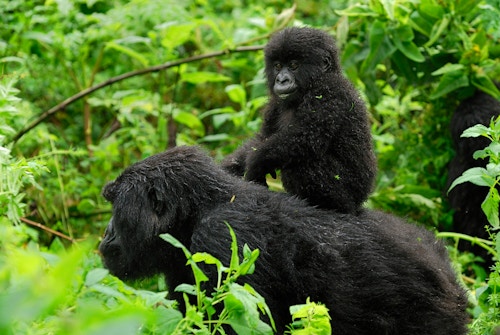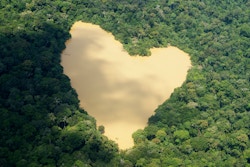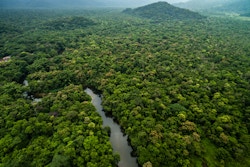The Congo Basin: Green treasure under threat
To save the second largest rainforest on earth, the rights of its traditional populations must be recognised and upheld.

The lush rainforests of Central Africa cover about 1,700,000 square kilometers, making up 18 percent of all the world's rainforests.
The vast Congo Basin rainforest extends across six countries: Cameroon, Gabon, Equatorial Guinea, the Central African Republic, the Republic of the Congo and the Democratic Republic of the Congo (DR Congo). It is the home of an incredibly rich and diverse ecosystem and is home to tens of millions of people, including hunter-gatherer groups collectively known as Pygmy peoples. These indigenous peoples are directly dependent on forest resources and ecosystem services for their material and cultural survival.
Most of this forest - as much as 60 percent - can be found in DR Congo. This is where Rainforest Foundation Norway fovcuses its attention in the region. Half of the tropical rainforest in DR Congo is primary forest: old-growth forest that has not been logged.

The Congo Basin, whose rainforest is second only to that of the Amazon in size, is an enormous treasure trove burgeoning with life and natural resources:
- The Congo River is the second largest in the world by discharge, winding through Central Africa and providing water and life to the rainforest.
- The rainforest of the Congo Basin is home to 600 different species of trees and about 8000 species of plants, of which a third are not found anywhere else on Earth.
- It is home to 400 known species of mammals, 700 species of fish, 900 species of butterflies, 1200 species of birds and 300 species of reptiles.
- The area stores 8 per cent of all the carbon present in the world’s forests.
- 90 million people live in this region and are dependent on the rainforest.
- In DR Congo alone, some 40 million of the country’s 70 million inhabitants depend on the rainforest for their livelihood.
- DR Congo is also home to as many as two million indigenous pygmy people.

MIGHTY RIVER: The Congo River provides water and life to the rainforest.

ENDANGERED ANIMAL: The few remaining gorillas in Central Africa depend on the rainforest for their survival.

PROUD PEOPLE: DR Congo is home to around 2 million Pygmies.

MAPPING FOR RIGHTS: Participatory mapping is key to the effort to secure the recognition of forest-depent peoples' access and rights to land.

SECOND LARGEST: The rainforest in Central Africa is second only to the Amazon rainforest in size.
How we go about saving the Congo Basin rainforest
Rainforest Foundation Norway (RFN) has been working in close cooperation with environmental and indigenous organisations Central Africa since 2003, specifically in DR Congo.
Our work in the region promotes the recognition of forest-dependent peoples' access and rights to land and is geared towards achieving a sustainable, community-based management of the rainforest. It is our experience that the rainforest is preserved most effectively in areas where its traditional populations secure the legal right to manage it.
We provide resources for capacity building and the strengthening of local organisations and national networks of non-governmental organisations, and support their advocacy work as well as their field work with forest-dependent peoples. This work is geared towards achieving a policy shift, towards one that respects human rights, maintains the integrity of the world's second largest rainforest and combats poverty through sustainable community-based forest management.

The indigenous peoples of the rainforest
The term "pygmies" have often been used to refer to the indigenous peoples of the Congo Basin. However, since pygmy has a negative connotation due to the historical use of the term, more often terms as "indigenous peoples", "hunter gatherers" or spesific indigenous names as "Aka", "Mbuti" or "Twa" are used today. The exact number of indigenous people in the DRC is unknown. Depending on sources, estimates of their population vary from 700,000 (approximately 1% of the national population) to 2,000,0000.
Traditionally, these peoples have a symbiotic relationship with the forest that surrounds them, and are in possession of invaluable knowledge about it. This knowledge has contributed to the preservation of their traditional territories. They in turn depend directly on the forest for their survival - and on its management in a sustainable manner.
But unfortunately the indigenous peoples of Central Africa are a marginalised group that are subject to widespread discrimination, and many live under very difficult conditions. As a result of frequent violations of the indigenous peoples basic human rights and the lack of recognition of their rights as indigenous peoples, many of their living areas have been destroyed and their way of life - including livelihood, tradition and culture - has been dying out.
One of our key goals in DR Congo is to obtain official, legally binding recognition from the state of its indigenous peoples with distinct ways of life and cultures that are in need of protection. Substantial progress has been achieved in this area in recent years. Indigenous peoples in DRC have their own movement and political processes to ensure their protection in the country's legislation are underways.

Deforestation and destruction
DR Congo suffers from what has become known as the “resource curse”: a wealth of natural resources, a history of weak and corrupt government, and a range of external interests have combined to create a scramble for resources for the personal gain of a few individuals that has crippled and impoverished the country and its people.
The greatest threats to DR Congo's rainforest
- Industrial logging
- Mining
- Plantations and industrial agriculture
- Urbanisation, road building and infrastructure
- Petroleum exploration and extraction activities, to an increasing degree
During the country's decades-long civil war, the rainforest in DR Congo was left more or less intact, but when the war gradually came to an end in 2003, investors began to see opportunities to make money from logging. Forests were opened to large-scale development projects and private investment, while the government was in the process of reforming its forest policy, with substantial support from international donors. Nevertheless, the world's second largest rainforest country has managed to keep deforestation reasonably in check, and since 2002 it has enforced a temporary ban on the granting of additional logging concessions.
However, despite this concession limit, permission has been granted for logging on 440,000 square kilometres of rainforest in the countries that share the Congo Basin rainforest. Preserving the rainforest in DR Congo is therefore an urgent matter.




